
In the late 1980s, when floppy disks were king and IBM PCs were still a novelty in many homes, Ford Motor Company did something pretty futuristic: they released a driving simulation game — for free. Called Ford Simulator, this 1987 MS-DOS program was part of a clever marketing push, blending the excitement of video games with car shopping.
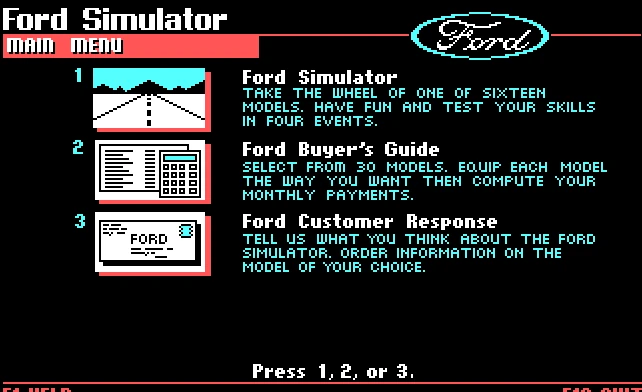
A Digital Showroom Ahead of Its Time
Ford Simulator wasn’t your average arcade racer. Instead, it was a car shopping and driving experience packaged into a computer program. Players could browse virtual Ford vehicles, read digital spec sheets, and even take cars for a “test drive” on pixelated roadways.
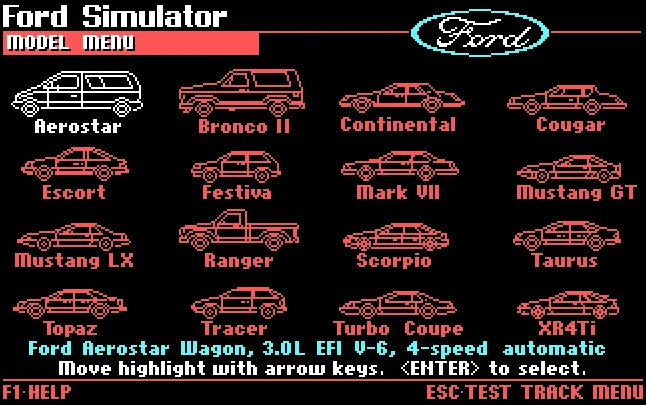
For an era when most computers ran on monochrome displays or, if you were lucky, had CGA graphics, Ford Simulator was surprisingly ambitious. You could view various Ford models of the time — like the Taurus, Escort, Mustang, and Ranger — and explore their features virtually, all before setting foot in a dealership.
Gameplay and Features
Once loaded, the program let you pick a vehicle and simulate a drive, with simple controls using the keyboard. The graphics were blocky and the road endlessly straight, but the idea was novel: you could feel like you were behind the wheel of a Ford, even if just on a green-and-black screen.
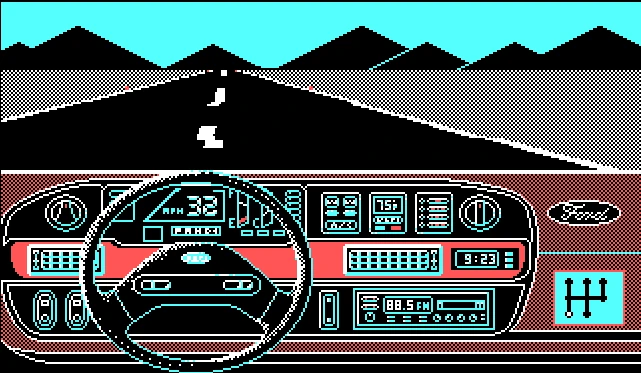
Ford Simulator also included mini-games, such as a gas mileage comparison where you’d try to maximize fuel efficiency, and a financing calculator that let you play with car loan numbers. For prospective buyers, it was part game, part educational tool.
Marketing Innovation
In 1987, this kind of software wasn’t sold in stores. Ford gave it away through dealerships and mail-in promotions, positioning it as both a game for the kids and a research tool for adults. It was one of the earliest examples of a major automaker using interactive media to market its lineup.
By letting people “test” their cars at home, Ford tapped into the growing excitement around home computing. This early blend of marketing and software foreshadowed the kinds of branded video games and interactive advertisements we see today.
Legacy and Nostalgia
While Ford Simulator didn’t have the lasting fame of classic PC games, it’s fondly remembered by retro computing fans and car enthusiasts. Over the years, versions from 1988, 1989, and into the early 1990s followed, each updating the vehicle lineup and improving the visuals.
For many, it’s a nostalgic trip back to a simpler time when even a primitive driving sim could feel cutting-edge.
Where to Play It Now
If you’re curious to experience Ford Simulator (1987) today, you don’t need to dig out an old DOS machine. Head over to GameYak.com — they host a playable version of the original game right in your web browser.
GameYak makes it easy to relive this vintage marketing gem without the hassle of emulators or disk images. Whether you’re a retro gamer or just want to see how Ford marketed cars back in the day, it’s worth checking out.


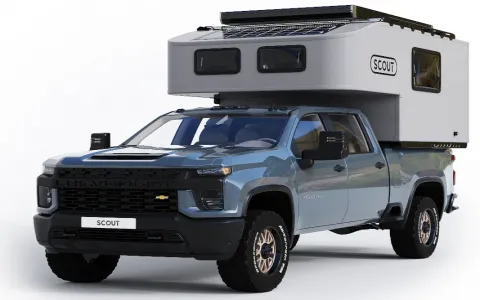
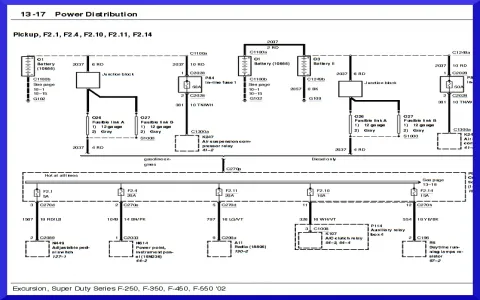



![What Ford F150 is Best for Towing ? [Full Guide]](/sites/default/files/styles/frontpage_stories/public/2025-04/f250-camping.webp?itok=6Ah370zB)

